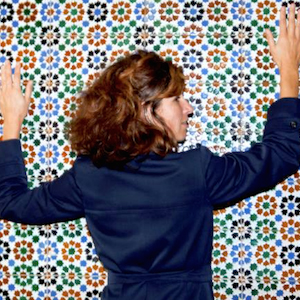The event drew in 45,000 people from the streets of Milan, and Khan’s project was shortlisted as one of the best installations of the over 1600 exhibits taking place in the city during Milan Design Week. Visitors from all over the globe enjoyed the exhibits and parties in the magnificent setting of the Baroque palace, relaxed with food and drinks, engaged in professional meetings and informal melting, and were served a surprising mix of design.
Following in the steps of Marcio Kogan, Diébédo Francis Kéré, and Diller Scofidio + Renfro, London-based architect Asif Khan wanted his courtyard installation to offer a new experience in the environment, responding to both the setting and the hectic atmosphere that envelops Milan Design Week. As he says, ‘I wanted to offer a moment of respite, a moment of relaxation. Our pavilion is a place to have conversations and unwind, to imagine something possibly like an inspiration of what you’ve seen at the Salone. And it’s essentially a public space.’

Acting for many visitors as an oasis and magnet, the name Tempietto nel Bosco means ‘small temple in the woods’, and reveals what kind of architectural dialogue with the 18th century Baroque palace Khan had in mind when developing the idea: a conversation that tells something about the past, the present and the future of humankind, hence the redness of the overall scene, and its reference to space’s clearing and the possibility of calling Mars home. The installation consisted of numerous red timber columns, with a Carrara marble clearing in the middle.
‘These 150 or so columns create almost 50 “rooms”, and a series of spaces between those rooms. Each group of four columns describes a room. It’s almost an abstract room because you’re just pointing to the corners of it. But when you’re within one of these, there is just enough space for three or four people. And because of the scale, it feels intimate and it feels like you’re talking between trees in the forest. Every time you arrive in one of these room spaces it opens up, and you feel a kind of decompression, a pause. You can walk in the structure, and it feels like you’re discovering one by one a series of new spaces. New in the way it frames the sky, in the way it frames the colonnaded space around the courtyard of Palazzo Litta. At the centre of all of this, there is this beautiful pure marble surface you arrive at from that particular texture we’ve created, which is this red volcanic pumice. The people moved from the hard streets of Milan onto this surface – it’s an incredibly forgiving surface: it’s hard and soft at the same time, and each step you take you hear a crunch. It slows you down. You’re in a different form of space.’
Visitors were chatting and taking selfies between the columns; were having a cool glass of Prosecco seated on the marble plates at the periphery of the installation; and were relaxing in one of the hand-woven hammocks by Living Divani and its master weavers that hung between the columns. They were listening to a lecture by Michele Di Lucchi on the marble, cut and produced by Van Den Weghe. They were watching the spotless blue sky framed by the red ochre columns, and at night gathered in the camp-fire like lighting by Artemide, which revealed the clearing in the forest. This was all supported from beneath by a clever raised floor system provided by Eterno Ivica. As one visitor said: ‘Besides the great show I discover each year in Palazzo Litta, it’s also my favourite hangouts to relax from these hundreds of kilometres I travel from the Fair to showrooms and openings.’ Both DAMN° and Mosca Partners heartily thanks all those who took part and visited. Same sort of time, next year?
Exhibitors at Palazzo Litta: Astep & Flos, Emmanuel Babled, ECAL + Foscarini, Hus & Dimora Ichendorf, Japan Creative, Jan Kath, Karakter + FORM portfolios, Kristiina Lassus & Samuli Naamanka, Limonta, Manerba, Accademia di Belle Arti (NABA), Nude, Politecnico di Milano, Pro Helvetia, Studio LoHo, Sollos, Mario Trimarchi (De Castelli), and Valli & Valli.

New to Palazzo Litta, the Swiss Arts Council Pro Helvetia introduced an installation showcasing the work of Diiis design studio, Florian Hauswirth, kollektiv vier, Alain Schibli, schoenstaub and Egli Studio. Together and individually, the selection of young and innovative studios demonstrates Swiss design at its best.

Non-profit organisation Japan Creative aims to make the new value of Japanese craftsmanship known to the world, and presented a series of collaborations between local Japanese manufacturers and internationally established designers: KYU and HATO by Kyukyodo (incense/Kyoto) with GamFratesi (Denmark); ABCD by TAKEYARI (canvas/Okayama) with Faye Toogood (UK); and HOLLOW cooking knife by SUWADA (blacksmith/Niigata) with BIG-GAME.

Second-year ECAL students on the Master’s programme in Product Design showed the prototype portable lights they developed in collaboration with Italian lighting company Foscarini.

Danish design brand Karakter showed its furniture, lighting, and interior objects by Joe Colombo, Bodil Kjær, Paul McCobb, Angelo Mangiarotti, Aldo Bakker, Gijs Bakker, PlueerSmitt, Anatomy Design, Guillaume Delvigne, Derek McLeod, Laura Strasser, and c.

German designer Jan Kath presented his latest collection of hand-knotted carpets, flanked by his well-known Erased Heritage and Artwork collections.

Alessandro Sarfatti, founder of Astep, reintroduced a family of products conceived by his grandfather Gino Sarfatti in 1959, called Le Sfere, in collaboration with Flos.
See Mosca Partners’ website for more sights and sounds from The Litta Variations: moscapartners.it


